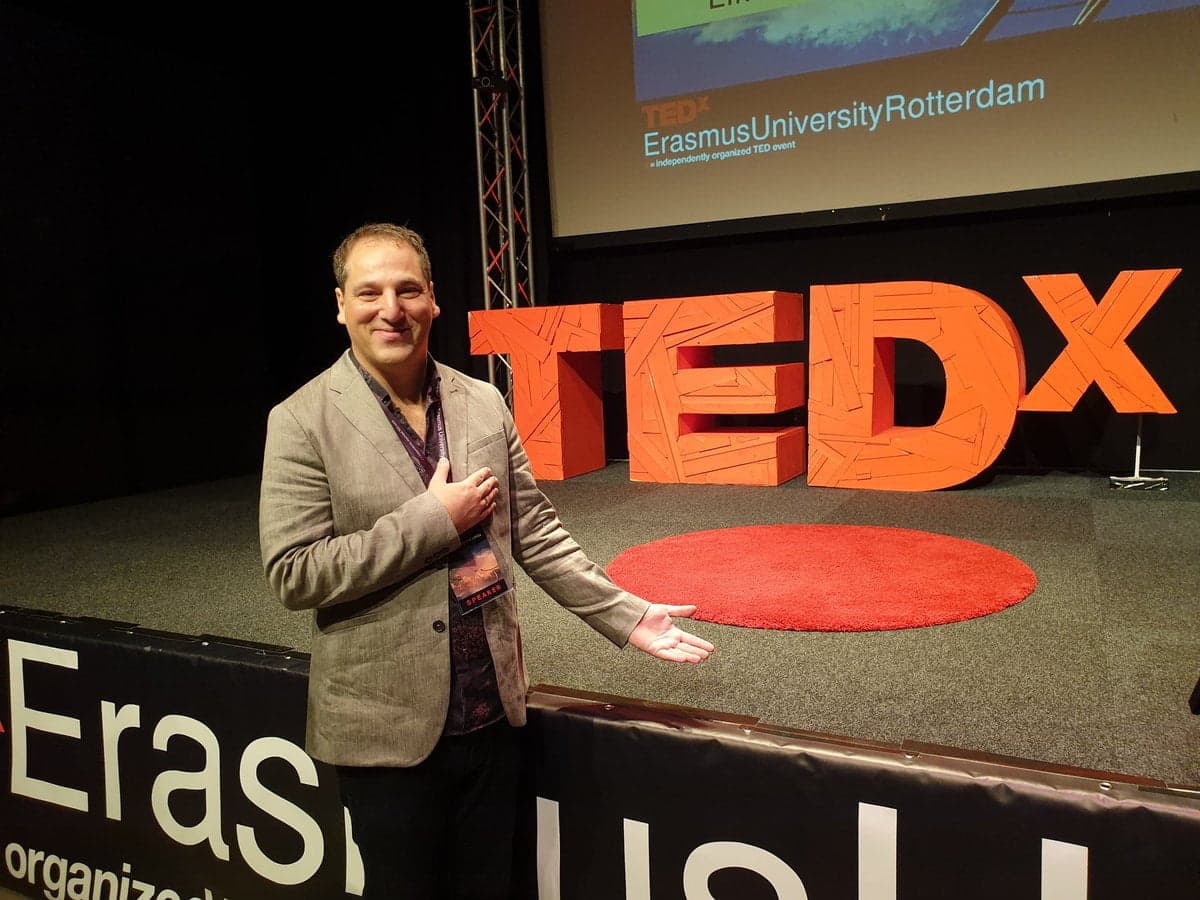Podcast: Play in new window | Download
Subscribe: RSS
 Instead of just encouraging employees to consume learning content, have you ever considered mobilizing them to actually create videos and share their knowledge with others in the organization? On episode 14 of the Learning and Development Stories podcast, Toby Newman made a compelling case on why you might want to consider doing this.
Instead of just encouraging employees to consume learning content, have you ever considered mobilizing them to actually create videos and share their knowledge with others in the organization? On episode 14 of the Learning and Development Stories podcast, Toby Newman made a compelling case on why you might want to consider doing this.
Stories
Toby is a Leadership and Development Lead at Here Technologies, a company that provides mapping and location data and related services to individuals and companies. He explained that when he was responsible for product training, he would take presentations that project managers had created and turn them into training videos using a rudimentary process of recording audio over the training slides.
After attending the Learning Technologies Expo in London, he was able to see first-hand how important professional video was in this industry. With a minimal budget, he decided that he would learn to create professional videos using trial and error. He started to figure out how to create videos that met the audience’s needs. This eventually led to the launch of a learning platform that involves Toby and his colleagues training up the company’s subject matter experts to share their knowledge by creating their own videos.
“So rather than them giving us the information and we turn that into a video, now we turn the tables and give them the ability to use this modern learning culture. We are now the facilitator in terms of the video knowledge,” said Toby.
He explained that this initiative contributes to self-directed learning.
“It gives us the ability to be a lot more flexible, agile and able to serve as many customers.”
Tying learning to business objectives
Toby shared the purpose behind creating this video learning platform. “The objective was to help as many people as possible.”
He explained that the video platform enables information to be spread simply and quickly.
“The users in general are looking for information right now rather than waiting for a workshop,” Toby said. “There is no way that we as L&D, with only 6-10 of us, are going to be able to support 10,000 people across the company. It is important that we as L&D empower the users so that they feel like they can do it on their own and don’t wait for us.”
Lessons from mistakes
Many of us can be terrified by video. Toby encouraged listeners to overcome this barrier.
“It took me about three to four months of sitting in front of a laptop and watching myself over and over and over and over again,” he recalled.
Engaging employees around this new initiative
Toby identified three hurdles in terms of getting his colleagues to engage with the video learning platform.
- Collaborating with the L&D team across the whole company.
- Balancing the needs of different learners, particularly younger groups who are comfortable with this type of concept and more traditional learners who might be more hesitant.
- Pitching the idea of video learning in a way that makes people understand that they are in control of the content they are creating.
Communications tactics
Toby shared the communication strategies he has been using to launch the video learning platform.
“First, we got senior leadership buy-in, and we got them in front of a camera,” he explained.
These senior leaders explained the rationale around the importance of knowledge sharing.
The next communication tactic has been incorporating testimonials. Peer-to-peer communication has spread the awareness about the benefits of using the platform.
“As most learners know, you learn in many different ways. You learn by listening, hearing, reading and touching. So in our communication, we have something you can see, something you can hear, something you can read, and something you can touch in terms of actually playing with the tool itself. So, we had that rollout. We launched the video, then we launched email communication, we did a live webinar that I hosted. People come on and see me demonstrating it and get Q&A’s going.”
Toby shared the importance of framing communications around WII-FM (what’s in it for me).
Knowledge transfer
Toby explained the constant struggle with knowledge transfer. In a company like Here Technologies, different countries develop and perfect a map.
“There are different rules of the road across countries. So, you need those experts. But it is not possible to scale in this way. So, the only way you can scale is to bring in automation, AI and machine learning, which we’re doing, and then bring the teams in across agile groups. In order to do this, we need to get the knowledge out.”
He explained there are two levels to knowledge sharing.
- As the sender, provide the knowledge in a way that is relevant to the audience.
- When receiving information, don’t dismiss something because it might not be the exact same context. Use what might be applicable.
Resources
Toby recommends the Chief Learning Officer website as a helpful resource for L&D Leaders.
He also recommends the Training Network Magazine.
Connect with Toby Newman on LinkedIn.
Listen to Toby’s Ted Talk.

